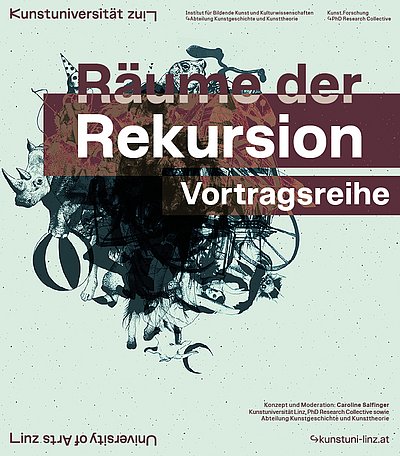Räume der Rekursion (Spaces of Recursion)
Start: November 4, 2024 University of Arts Linz, Domgasse 1, Expostmusikraum
Guest lecture series of the Department of Art History and Art Theory and the PhD Research Collective.
Recursion is derived from recursio, running back. In mathematics and computer science, it describes a solution strategy: A function calls itself again and again on a smaller version of the original problem until it can be solved completely. The term can also be found in other disciplines, usually referring to interlocking and linking or – as in art – to repetition and mirroring.
But what does it mean to go back? And isn’t self-referring something that tends to be associated negatively? The potential of referring back can be traced by looking at the verb rekurrieren, which makes the element of picking up and linking up clearer. However, recourse does not only mean referring to something, but also stands for raising an objection, among other things – this is where the connection to resistance and thus refusal is made. Seemingly backward-looking, it is perhaps about nothing less than negotiating the future.
Spaces of recursion - these can be: spaces of retreat, places of undisturbed reflection, but also of solitude, where you are thrown back on yourself and yet hear the voices of others more clearly, (mental) states, spaces of experimentation, of trying things out and playing them through. Nevertheless, the series not only wants to feel its way into these spaces in order to explore the processes and potentials associated with them, but also to provide space itself – space to discuss ideas, theories and concepts, to spin them out or to raise objections and in the course of this to allow thoughts to blossom (in the sense of recursive growth).
DATE IN THE WINTER TERM 2024
November 4, 2024
Kathrin Busch: Spaces of Weakness
DATE IN THE WINTER TERM 2025
November 11, 2025
Hartmut Böhme: Rekursive Darstellungsformen in der Geschichte der Landschaftskunst
The event series is organized by Caroline Salfinger (University of Art and Design Linz, PhD Research Collective / Art History and Art Theory) and supported by Anne von der Heiden (University of Art and Design Linz, Art History and Art Theory).
